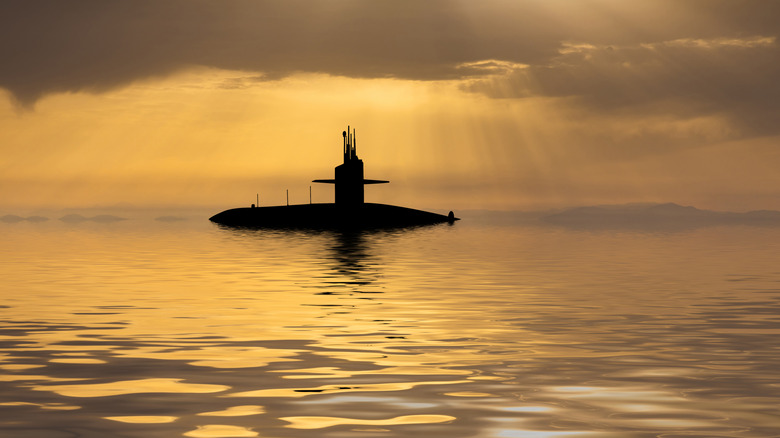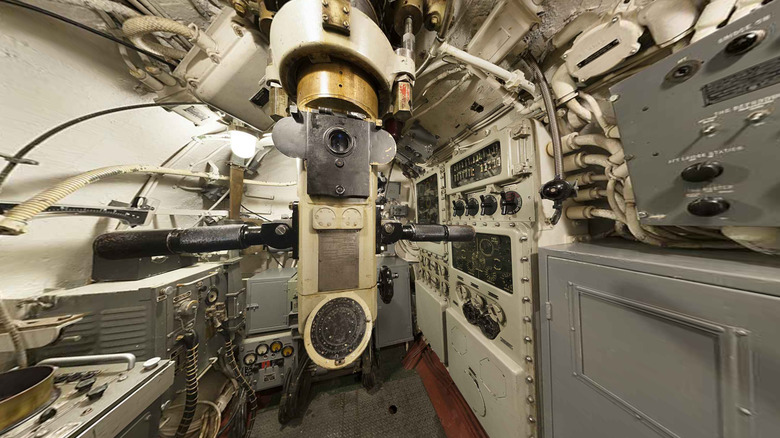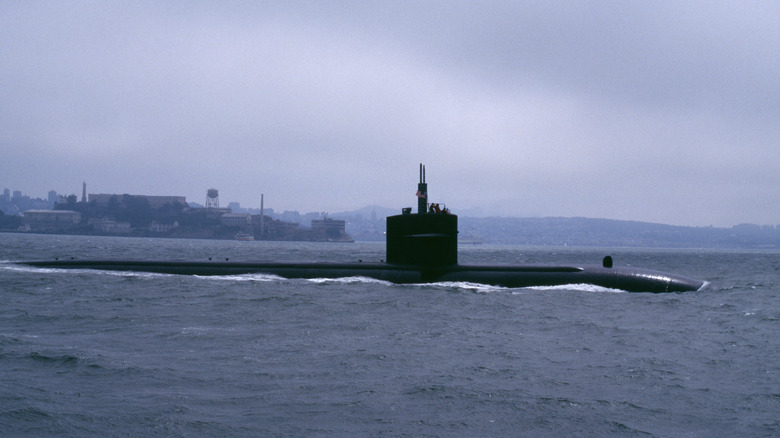Why Do Military Submarines Have Sails? Here's What They're Used For
The purpose of a sail on a boat, obviously, is to catch the wind and propel it forward. This was how all naval vessels were propelled before solutions like steam engines became commonplace. Perhaps because of that, sails have appeared on many other naval vessels over the years, even those that have no need for wind propulsion. Case in point, one of the most prominent elements of a typical military submarine is its own sail.
Nuclear attack submarines employed by the United States Navy have large, solid structures jutting up out of the middle of the vessel, usually with a slightly cylindrical shape. Despite being referred to as "sails," these structures have nothing to do with catching wind. Rather, the sail of the submarine is its point of central control and command, where the commanding officer issues orders to the rest of the crew and critical operational equipment like torpedo computers and periscopes can be found. This has been the default setup for Naval submarines for many years, though in the not-too-distant future, traditional sails could make way for temporary inflatable sails, deploying only when necessary to help improve the vessel's overall speed and maneuverability.
Sails hold the conning tower, where the vessel is commanded
A traditional United States Navy submarine is a massive, completely enclosed cylinder with narrowed-off ends, within which you'll find both an inner and outer hull. The only elements that diverge from this uniform cylindrical shape are the rudder and propeller on the back and the large sail jutting up out of the top.
The sail of a submarine houses a command center known as the conning tower. The conning tower is the de facto seat of power in the submarine; it's here that you'll find the battle station for the vessel's commanding officer, computers and instruments for aiming and firing torpedoes, and navigational equipment such as radar consoles and periscopes.
Part of the reason the sail needs to jut out of the top of the submarine is because it houses the large masts necessary to use those navigational implements while deep beneath the surface. Radio and radar antennas are extended up through the conning tower to receive communications and scan for hostels and obstacles, while the periscope physically extends up through to the top of the sail so an officer can visually inspect the water's surface.
Future submarines may do away with sails
If the idea of housing a submarine's critical facilities in a sail seems a bit odd and antiquated, you should remember that submarines have been around for hundreds of years. In that time, naval technology has made some impressive leaps and bounds, optimizing both the shape and function of submarines. For instance, the development of photonics masts has replaced traditional mirror periscopes with electronic cameras, though these masts still need sails to poke up out of.
In the near future, new submarines employed by the United States Navy may end up doing away with sails entirely. According to a Navy research document obtained by TWZ in 2021, the Navy is considering a new kind of submarine with an inflatable sail rather than a solid one. By moving critical equipment elsewhere in the submarine, the sail could be relegated exclusively to deploying communication utilities like photonics masts. If the submarine doesn't need to be scanning for something, the sail could be deflated, giving the vessel a more streamlined, hydrodynamic shape that would increase its speed and maneuverability. This is still an experimental concept, but the naval forces of other countries like China have already begun experimenting with submarines with either no sail or a low-profile one.


